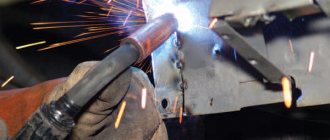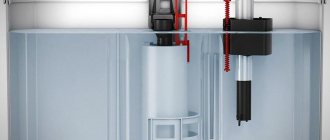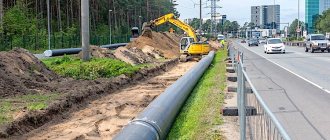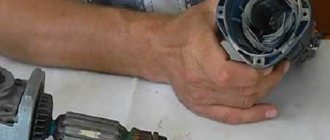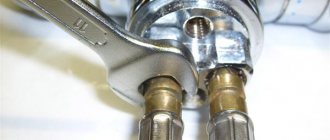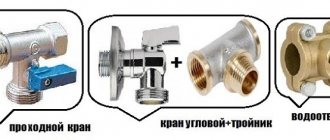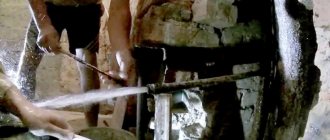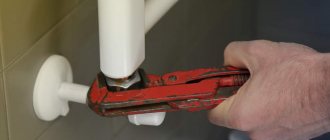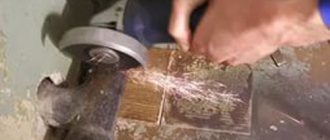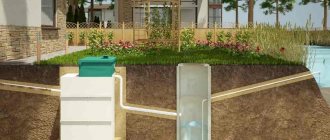Emergency situation
Tubes and hoses that connect individual elements of brake systems (so-called brake lines) are needed to transmit forces. The system contains a special working fluid (it is the carrier of energy), which transmits force from the brake pedal to the master cylinder, and only then the force goes to the working cylinders. In general, piercing tubes is rare, but connecting nodes can indeed leak - this is not very uncommon. Often, a car enthusiast only needs to inspect the hydraulic circuit after first lifting the car or driving it into an inspection hole. Experts confirm that inspection and diagnostics of car brake systems should be carried out every 50 thousand kilometers. Individual elements of the circuit must be replaced at certain intervals.
Spare parts for Hyundai accent
Motor oil
ACCENT sedan (MC) (11.05 – 10)
Spare parts for Chevrolet lacetti
Motor oil
LACETTI sedan (J200) (03.03 - )
It is important to note that there are two circuits in the brake system. One is the main one, and the other is a backup one. Usually both circuits work, but if one fails, the second will take over all its work. Due to this, the likelihood of a situation occurring when the entire braking system fails is reduced significantly. But how can you understand that there is a problem with the brake pipes without contacting a specialist? Here you need to pay attention to the following:
- The brake drums began to heat up more than usual;
- There is a brake fluid leak;
- Upon inspection, it was revealed that the brake hoses began to become covered with cracks;
- Uneven wear of the installed brake pads is observed;
- The brake pedal has a large free play;
- When pressing the brake pedal, the driver hears a squeak and feels a pulsation;
- The braking distance of the car has increased significantly.
In most cases, brake lines simply become obsolete. Original tubes are usually metal, and metal does not last very long, because sooner or later it will begin to suffer from corrosion. Tubes wear out especially quickly in winter, when roads are covered with salt, a substance that accelerates the destruction of metal. Additionally, impacts from rocks, gravel, and branches from the road can damage the tubes. It is impossible not to note the importance of proper installation of tubes. If the fittings are overtightened, the tubes themselves are not fixed correctly or are severely broken in several places, they will wear out faster.
This is interesting: Is it possible to make parking sensors with your own hands?
When is it time to change tubes?
Signs you should be looking for a flaring kit include:
- During emergency braking, when you press the pedal, a very characteristic creaking sound is heard;
- Under the same outgoing conditions, a rhythmic vibration is felt;
- The braking distance of your car is noticeably longer;
- The brake pedal travel becomes freer, it seems to be dangling;
- Brake fluid may leak (this is especially noticeable when the car is parked overnight for a sufficiently long time);
- Significant overheating of the brake drums and premature uneven wear of the pads are often observed;
- Indirect symptoms include the car pulling to the side while driving in a straight line.
More about materials
Today, brake lines are made from several types of materials, but in passenger vehicles only copper and steel are used. It is impossible to mention here several types of rolling. The “mushroom” type rolling is most common in European cars, while the conical type is most common in Asian cars. Both types of rolling have their own characteristics. For example, when flaring copper tubes, deformation is often observed in the “fungus” area - a direct consequence of the high ductility of copper. But if the rolling is conical, then the connection, on the contrary, becomes more airtight. Here's what's important for ordinary car enthusiasts to know:
- Copper tubes are easier to install, they are more flexible and pliable and better withstand the effects of an aggressive environment (it’s not for nothing that we mentioned the salt used to cover roads in winter). Copper tubing is considered particularly preferable if the system uses conical rolling;
- Steel tubes are rigid and hold their shape well. They are recommended for use in automotive clutch systems, where the tube is rigidly fixed. The clutch tubes are quite short, so the high strength and low tendency of steel to deform comes in handy.
Experts note, however, that with the transition from conventional brake fluids of butyl alcohol and castor oil to DOT 3 and higher fluids, copper brake lines began to show serious shortcomings. First, DOT are quite hygroscopic and form several galvanic couples in the braking system. Damage may occur at contact points. Secondly, copper has a different coefficient of thermal expansion than steel. In some cars, the brake line can be about 4 meters or more in length, and it is this line that will noticeably lengthen when the brake fluid heats up. Experienced car enthusiasts note that in ordinary cars you can safely use copper tubes, but in SUVs that are used in particularly harsh conditions, it is better to use tubes made of high-quality stainless steel.
Main functions and types of brake pipes
To understand the purpose of brake lines, it is necessary to study the complete process. When the driver wants to stop the car, he presses the pedal. Under the action of the main cylinder, a special fluid moves through the channels. The brake pipe represents the infrastructure of the entire system. Its main role is to ensure the delivery of force to the brake pads of the wheels. The products have a main and backup contours.
The brake pipe is in most cases made of steel or copper. The following models are presented on the market:
- hoses made of thick rubber. The product includes several parts that hold brake fluid. A layer of steel mesh prevents deformation under high pressure. The rubber coating provides a high level of flexibility and moisture resistance. The left brake pipe is no different from the right;
- reinforced hoses. The product has an inner layer in the form of a high-strength plastic tube. The outer covering is represented by a special mesh-braid made of metal. The design allows you to reliably control the braking process. The downside of the tube is its ability to scratch everything around. Manufacturers often cover the product with a layer of PVC. Front brake pipes will last for several years.
Brake pipe flaring
The use of tubes in the design of vehicles
Modern machines use several hydraulic systems with different main lines. One of them is the braking system. The working fluid moving through it must be isolated from the external environment due to tightness.
You need to know that thanks to good connections at the joints of the pipes, it is possible to achieve a high degree of tightness for the vehicle’s vehicle.
The success of reliable connections depends on the quality of the flaring. This operation uniformly increases the diameter of one tube tip. At the counter tube, the diameter of the tip is reduced to ensure rolling (entering a small diameter into a larger one and holding the pair in this position for a long time).
We recommend: How to modify and modernize the stove on a VAZ-2107 with your own hands?
If the tubes in any of the sections receive mechanical damage, then due to depressurization of the system, part of the main wiring must be replaced. At a car factory, flaring is done using special equipment that contains hydraulic, electrical and mechanical drives. In garage conditions, a device for flaring brake pipes is most often mechanically driven by the muscular strength of the performer.
Read more about tube and flaring machine manufacturers
First and foremost, never use welded copper tubing on your vehicle to repair brake lines. Sometimes these are found in markets, less often in stores. With large pressure drops that occur in the system during sudden braking, such tubes burst. Optimal choice: seamless copper tubes. When purchasing stainless steel pipes, there is nothing particularly to worry about, since there are practically no unscrupulous manufacturers of such pipes.
The most popular among domestic car enthusiasts are tubes from WP (Poland). The company offers tubes, fluids, fittings, tees, repair kits and tips. The quality of the products is high, and the prices are very affordable. As for tube flaring kits, it is worth paying attention to the companies Biltema (Sweden), VAG (Germany), Jonnesway (Taiwan), Rothenberger (Germany). Rothenberger instruments are especially good . They are quite expensive, but they are made of very high quality and are quite suitable even for particularly complex work.
Device, principle of operation
So, the driver stops the car by pressing the brake pedal. The latter affects the brake force booster, and the latter acts on the GTZ, which compresses the fluid in the lines.
Under the influence of the GTZ force, the liquid is compressed and passes into a zone with minimal pressure. These are tubes, and then - working mechanisms. The brake fluid presses on the drive and the caliper compresses the pads. When the pedal pressure is released, the pressure in the brake booster decreases. Springs in the mechanism release the pads. The liquid moves back into the expansion tank - into the area where the pressure is minimal.
The movement of brake fluid is carried out through copper tubes. The latter are connected to the main brake cylinder and laid along the bottom of the car to the brake mechanisms. The connections of the tubes to the mechanisms and to the GTZ are made in the form of threads - this ensures maximum reliability. After all, the pressure in the line can be quite high.
To increase the reliability of the systems, the tubes are connected to the GTZ diagonally. This makes it possible to use the brake if the latter fails. For example, from the GTZ one of the tubes connects the front left brake mechanism and the rear right one. Another tube directs fluid to the front right and rear left wheels. To ensure that the pressure in the system does not exceed the permissible value, a pressure regulator is installed at the places where all the tubes are connected. In common parlance he is called a “sorcerer”.
This is interesting: Repair of diesel engine turbines - we study the causes of breakdowns and ways to eliminate them
Signs that replacement is needed
Anyone, even an inexperienced motorist, can independently and without much effort determine whether it is worth changing the brake lines. Usually a complete replacement is necessary if there is fluid leakage from the system or if the drums have overheated. It is also advisable to replace the tube if the pedal free play or braking distance has increased. Replacing the brake pipe is also recommended if the pads have uneven wear. This means that they work under different pressures.
In what case is it necessary to flare the brake pipes?
A clear sign that it is time to prepare a brake pipe flaring kit is the following behavior of the car. During an emergency stop, a characteristic creaking and pulsation occurs when you press the pedal. The braking distance will also increase significantly. In addition, the travel of the pedal responsible for emergency stopping will be freer. It is possible that fluid will leak from the system, the brake drums will begin to overheat, and the pads will wear unevenly. Also, very often, with such malfunctions, the car pulls to the side while driving, but this can be considered an indirect sign.
Brake pipes most often fail due to the destruction of the hexagonal structure of the head. Also, threaded connections often become clogged or become coked when liquid enters during vehicle operation. Corrosion, microcracks, contamination and other defects lead to leakage of the brake fluid and incorrect operation of the system. In order to avoid unexpected breakdowns, you should monitor the condition of the machine; this mechanism should be diagnosed at least once every two years. Drivers who mercilessly exploit their “iron horse” are recommended to check the condition of this system after every fifty thousand mileage.
Reasons for tube failure
As a rule, on most cars, the brake line becomes unusable due to corrosion. It is not uncommon for old pipes to develop cracks. Brake fluid then slowly leaks out of these cracks. The tubes are made of copper and, it would seem, should not corrode, but this is not the case. Corrosion eats up highways, and we also need to add to this the negative influences of the external environment. The environment has a particularly negative impact on the metal of pipes in winter, when utility services spray roads with caustic reagents.
Also, one of the reasons for failure is poor fastening of the line to the body. Often the line is fixed to the bottom of the car and is not protected by anything. In winter, the bottom of the car can catch various obstacles and as a result the tube cracks or breaks. Also, if the element constantly moves along with the body, then over time a kink appears at the place where the line bends. The part is easily damaged.
Practical tips for preventing brake pipe wear
Modern brake system designs on cars and trucks are approximately similar. To extend the useful life of your products, consider the following tips:
- give preference to certified service centers;
- Change the brake fluid promptly. Experienced car owners perform these actions every 35 thousand km;
- break in new discs and pads. Avoid prolonged braking;
- Pay attention to the signals from the car's on-board computer. Modern models inform owners about various breakdowns;
- use only high-quality components. Parts must comply with the manufacturer's requirements;
- Use only high-quality caliper lubricant. Clean the assembly from dust particles and dirt elements;
- Always check the condition of your car's wheels. Do not install tires and wheels that are not specified for the model.
It is best to replace brake pipes if they are damaged in their entirety. It is not allowed to insert special inserts or solder damaged areas. You should not save on repairs, since money is not comparable in value to the lives of family and friends. The working pipe of the brake system is the key to safety when driving a car.
Flaring machine
Of course, if the pipes are faulty, you can take the car to a service station and entrust the repair to specialists. But why spend money on something you can do yourself? To do this, you need to purchase a flaring tool in specialized stores or order it online. It is available for inch or metric threads. The set includes a pipe cutter, a device, pliers, a clamp, and dies for different diameters of tubes for flaring with a fungus.
When purchasing a tool, you should pay attention to the manufacturer and cost. It is better not to buy the cheapest sets, as their quality is not conducive to long-term use. This repair method is less expensive than in a car repair shop, and relatively easy.
How to flare brake pipes
If there is a need to replace brake pipes, you have to contact a specialist. However, it is quite possible to make tubes or repair them yourself. You can’t do without tubes, special tools and fittings. Domestic classics with copper brake lines are often used as a pipe donor. Also keep in mind that it is better to use annealed copper . If you know air conditioner or refrigerator specialists, they will probably be able to provide you with cut-off pipes of the required diameter. When selecting fittings, you need to pay special attention to the thread. Fittings for brake systems of domestic cars most likely will not fit if you have a foreign car. Usually foreign cars have 10x1 . As practice shows, it is better to take fittings in batches - buying them individually is very expensive. As for tools, the situation here is ambiguous. Flaring machines sold in stores often break off the “fungus” guide, and the highest quality machines cost a lot of money. If you decide to make the brake pipes yourself, you will have to spend a lot of money on the machine. You will also need pliers, a pipe cutter, a fixing bar, gasoline or any other degreasing liquid, and a drill. Here's what you need to do to repair:
- Identify the damaged tube;
- Unscrew the required tube from the caliper or from the cylinder;
- Cut off the damaged area and degrease the cut edge;
- Clamp the remaining area with pliers, leaving a 5-centimeter section;
- Use a drill to chamfer the protrusion of the tube from the inside and immediately remove the chips;
- Place a fitting on the treated tube, directing the thread correctly;
- Insert the edge of the tube into the flaring tool and use it for its intended purpose;
- Mount all parts;
- Pour brake fluid into the system and run it through. Additionally, test the brake system.
If everything was done correctly, the new tubes will last a long time. Since the brake system of a car is quite simple, even an inexperienced car enthusiast can handle its repair. However, it should be noted that flaring brake pipes using a machine is not easy for everyone the first time. Before carrying out work, it is best to watch the training video.
Homemade device for repairing brake pipes
An even cheaper method is to make a homemade device. If you have the desire and minimal skills to work with your hands, there is nothing difficult about it. First you need to make a base (frame) for attaching the tubes. You can assemble it from two steel corners. Cut the corners to the required length with a grinding machine, drill two holes in them for fastening with bolts. This is done in 15 minutes.
Having assembled the frame, you need to make holes for the tube and chamfer it using a drill press or drill. The most difficult thing is the production of punches (mandrels). You can order them from a familiar turner.
Frequently asked questions
In general, there should be no problems with the selection of tubes, tools and other things that will be required during rolling. However, many interesting things can be learned from manuals for car mechanics and auto mechanics. Let's answer popular questions regarding brake pipes, using instructions and advice from these guides:
- How to coat brake pipes? Answer : The original tubes are usually coated with a polymer material. The average car enthusiast can use an anti-corrosion spray;
- Is it possible to solder a brake pipe? Answer : this is an extremely unreliable solution that experts do not resort to. Leaking tubes are replaced. Only in some cases is soldering using hard solder allowed - with proper rolling, the solder will not reduce the diameter of the entire tube;
- Is it possible to bend brake pipes? Answer : it is possible, but the bend angles should not be large. It is especially not recommended to bend steel tubes at a large angle. For such work, it is best to use a pipe bender. Unbending the tubes is prohibited;
- Do I need to clean my brake lines? Answer : Yes, but it's really about cleaning the entire system. It is enough to monitor the brake fluid level and its condition. Periodically, the brake system should be flushed with fresh brake fluid.
It should also be noted that some car enthusiasts carefully clean the brake pipes and paint them in the color they like. This procedure is not mandatory, but it is quite possible to paint the brake pipes without harm to the brake system.

